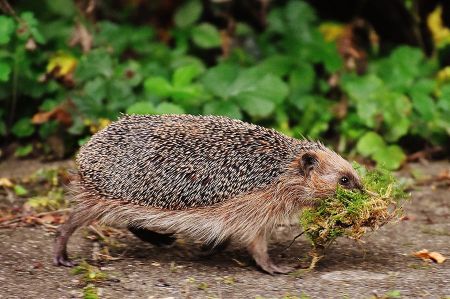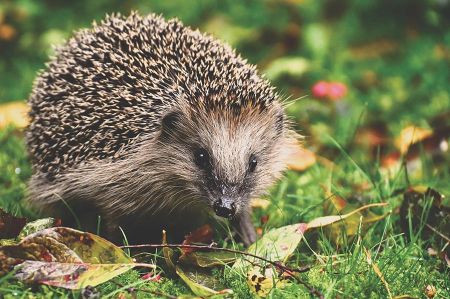Hedgehog offspring are in the nests - be careful when gardening
- Written by Portal Editor
The first hedgehog offspring are here! Around seven centimeters long, with around 100 soft spines hidden under the skin, blind, but already with five tiny claws on each paw - this means that there are usually four to five hedgehogs in the protected nest.
From June to September, our gardens and parks become nurseries for the animal of the year 2024. So that the young hedgehogs can grow up safely, we humans should pay particular attention to them when doing gardening: the new hedgehog family needs an undisturbed hiding place. By the way: female hedgehogs are single parents - the male hedgehog disappears immediately after mating.
Interesting facts about the history of hedgehogs

In the early Christian natural science of Physiologus, this alleged property of the animals was used for a religious metaphor that found its way into various medieval bestiaries: the hedgehog represents the devil, who roams around the Lord's vineyard and wants to steal as many of God's "fruits" - i.e. believing Christians - from it as possible.

Hot, dry summers in Europe (2018, 2019 and 2020, due to global warming) promote the death of insects; in many places, the soil is dry and hard as a result. The number of hedgehogs in Germany, Great Britain (the "motherland of hedgehog research") and other countries has declined significantly since the mid-1990s. The heavy use of pesticides also harms hedgehogs, as it does all living things.
Lifestyle and diet of hedgehogs
The claim that hedgehogs store their food supplies on their spines is also false. Although leaves or fruit are sometimes found impaled on their backs, the hedgehogs do not feed on them. They ingest this ballast unintentionally, for example in their nest, and show little enthusiasm for removing it.
That's why protecting hedgehogs is important
Hand tools such as hedge trimmers, rakes and brooms are therefore more suitable than machines during the birthing and rearing period. "If you discover a nest, you can react much more quickly and protect the animals from harm," says Mendel. It should now be a given that robotic lawnmowers are not used at dusk or at night to protect hedgehogs.
They rummage through compost and leaf piles for beetles, caterpillars, insect larvae and worms and also eat discarded food scraps next to rubbish bins. "Sometimes a young hedgehog loses track of all the culinary temptations and can no longer find its way back to the nest. It then calls for its mother with soft squeaking sounds," says Mendel. The mother hedgehog hears the cries for help, hurries over, panting, and collects her lost garden wanderer.
You can find more information about hedgehog-friendly gardens here: Hedgehogs - clear the way for those with quills (https://bit.ly/bahnfrei-fuer-den-igel).
In cooperation with: Jenifer Calvi / Press Officer
German Wildlife Foundation
Christoph-Probst-Weg 4
20251 Hamburg
Please read as well:
